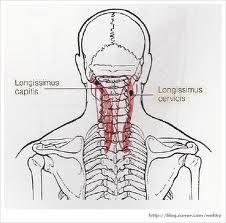
Longus Capitis
- Concentrically accelerates cervical flexion
- flex the head and neck, rotate the head ipsilaterally
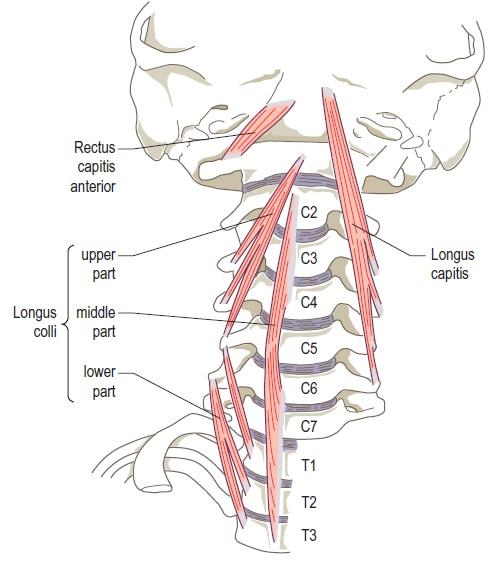
Longus Coli
- Concentrically accelerates cervical flexion, lateral flexion and ipsilateral rotation
- It is commonly injured in rear end whiplash injuries, usually resulting from a car crash. This muscle is in front of the spine and is thought by some scientists that it may cause some whiplash patients to have an unnatural lack of curvature in the patients' neck.
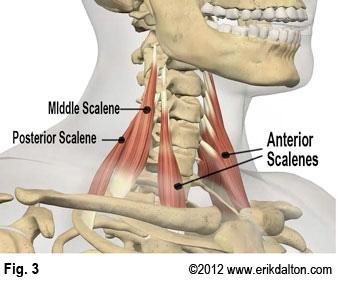
Scalenes
- Concentrically accelerates cervical flexion, rotiation, and lateral flexion
- assists rib elevation during inhalation
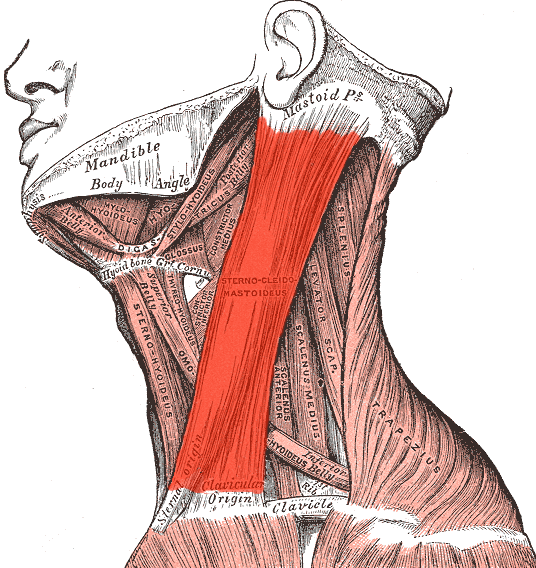
Sternocleidomastoid
- Concentrically accelerates cervical flexion, rotation and
lateral flexion
- When both sides of the muscle act together, it flexes the neck and extends the head. When one side acts alone, it causes the head to rotate to the opposite side and flexes laterally to the same side (ipsilaterally). It also acts as an accessory muscle of respiration, along with the scalene muscles of the neck.
Levator Scapulae
- Concentrically accelerates cervical extension, lateral and ipsilateral rotation when the scapulaer is anchored
- Assists
in elevation and downward rotation of the scapulae
- As the Latin name suggests, its main function is to lift the scapula
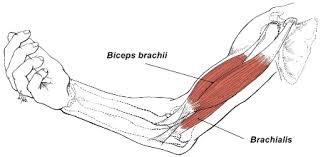
Brachialis
- Concentrically accelerates elbow flexion
- is a synergist that assists the biceps brachii in flexing at the elbow
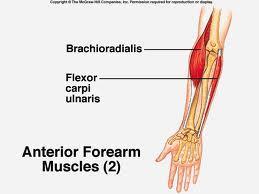
Brachioradialis
- Concentraically accelerates elbow flexion
- synergist that assists the biceps brachii in flexing at the elbow
- Other name: Forearm (Upper-outer)
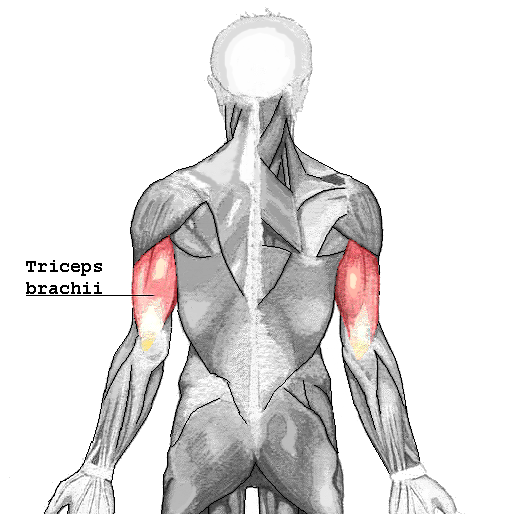
Triceps Brachii
- Concentrically accelerates elbow extension and shoulder
extension
- It is the muscle principally responsible for extension of the elbow joint (straightening of the arm).
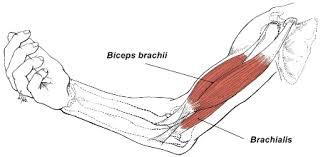
Biceps Brachii
- Concentrically accelerates elbow flexion, supination of the
radioulnar joint, and shoulder flexion
- its main function is where it flexes the forearm at the elbow and supinates the forearm. Both these movements are used when opening a bottle with a corkscrew: first biceps unscrews the cork (supination), then it pulls the cork out (flexion).[1
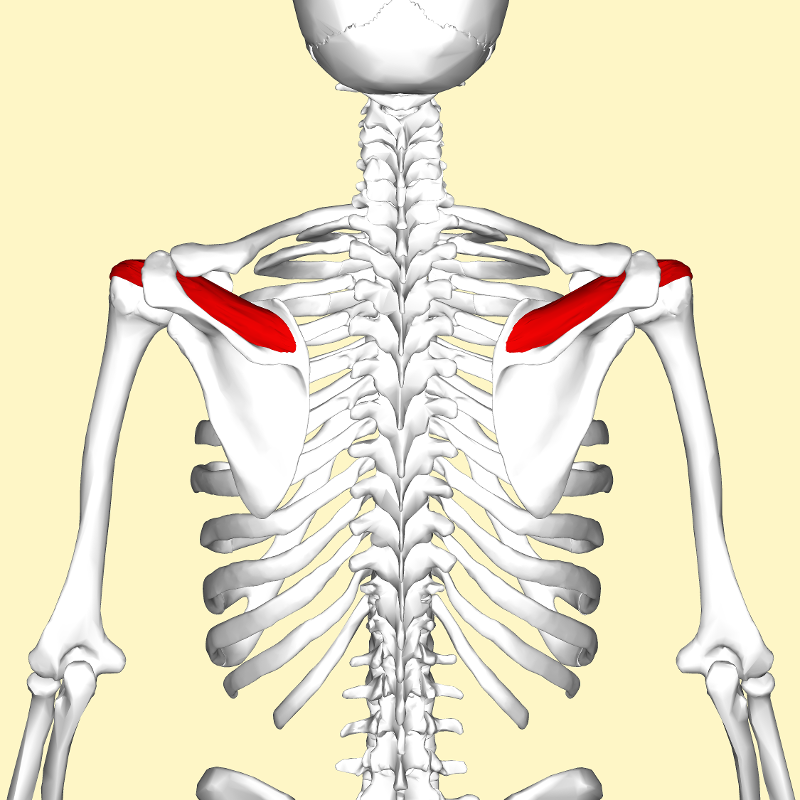
Supraspinatus
- Rotator Cuff
- Concentrically accelerates abduction of the arm
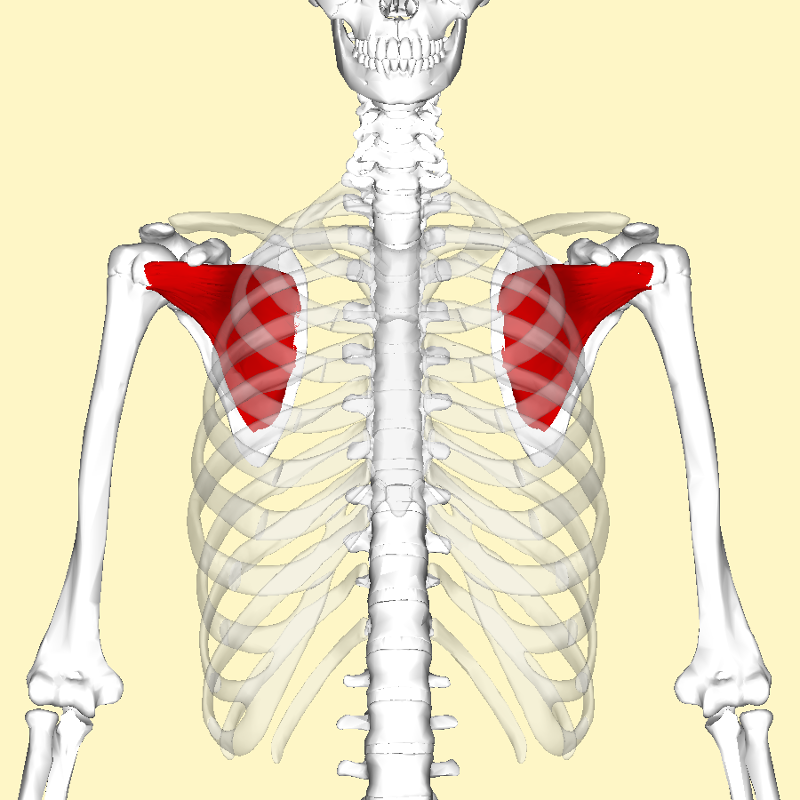
Subscapularis
- Rotator Cuff
- Concentrically accelerates shoulder internal
rotation
- rotates the head of the humerus medially (internal rotation); when the arm is raised, it draws the humerus forward and downward. It is a powerful defense to the front of the shoulder-joint, preventing displacement of the head of the humerus.
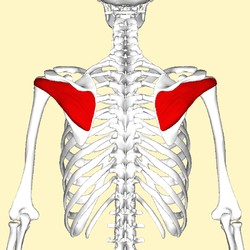
Infraspinatus
- Rotator Cuff
- Concentrically accelerates shoulder external rotation
- As one of the four muscles of the rotator cuff, the main function is to externally rotate the humerus and stabilize the shoulder joint.
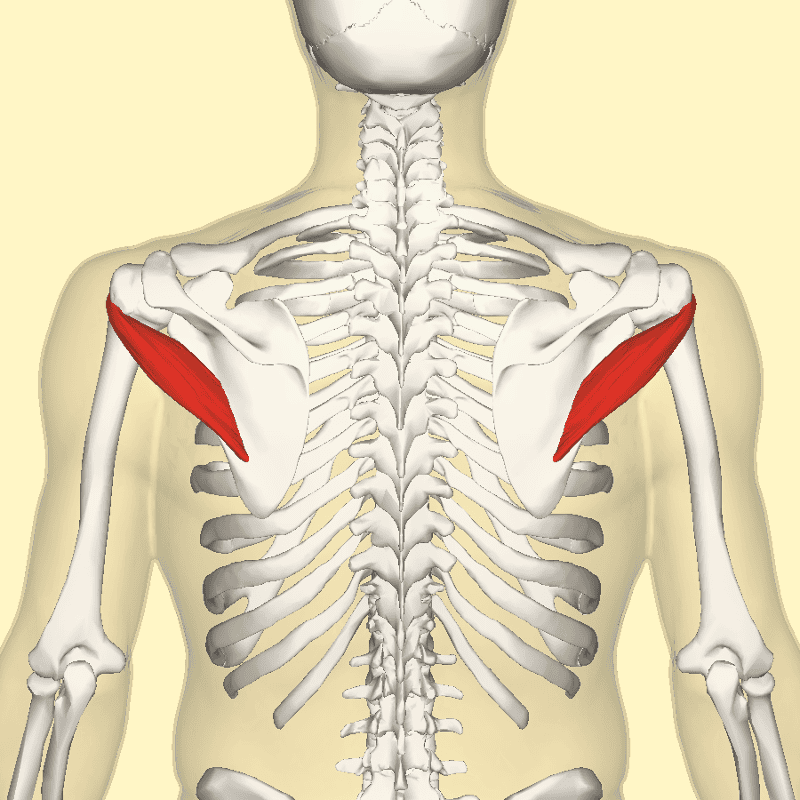
Teres Minor
- Rotator Cuff
- Concentrically accelerates shoulder
external rotation
- help hold the humeral head in the glenoid cavity of the scapula
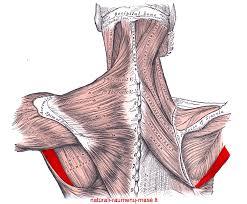
Teres Major
- Concentrically accelerates shoulder internal rotation, adduction and extension
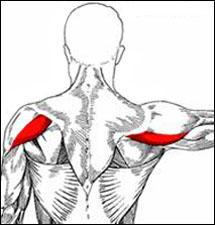
Posterior Deltoid
- Concentrically accelerates shoulder extension and external
rotation.
- one of 3 deltoid
- shoulder (rear)
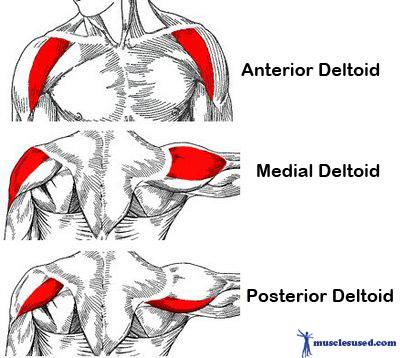
Medial (lateral) Deltiod
- Concentrically accelerates shoulder abduction
- In addition to being fuctional, this muscle helps create a defined look to your shoulder when developed
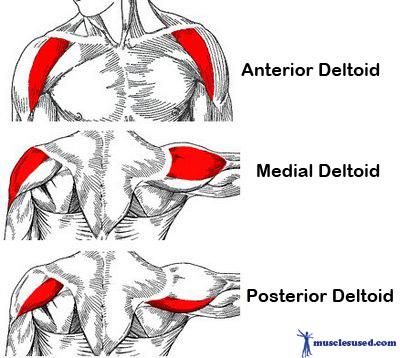
Anterior Deltoid
- Concentrically accelerates shoulder flexion and internal rotation
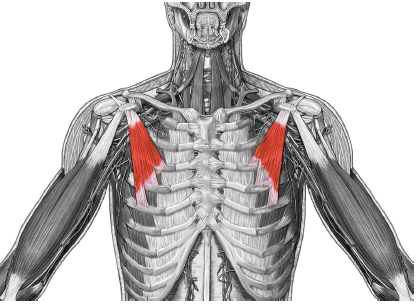
Pectoralis Minor
- Concentrically protacts the scapula
- Draws scapula forward and and downward
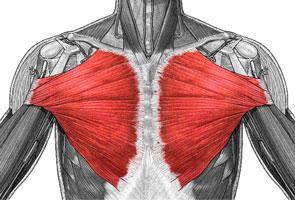
Pectoralis Major (pecs)
- Concentrically acceleratees shoulder flexion, horizontal
adduction and internal rotation
- predominantly used to control the movement of the arm
- also play a part in deep inhalation, pulling the ribcage to create room for the lungs to expand
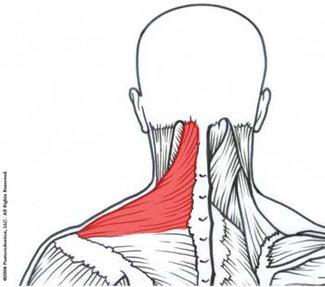
Upper Trapezius
- Concentrically accelerates cervical extension, lateral flexion, and rotation
- Concentrically accelerates scapular elevation (traekker skulderblade up)
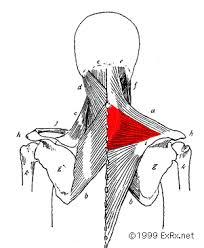
Middle Trapezius
- Cencentrically accelerates scapular retraction (traekker skulderblade mod midten)
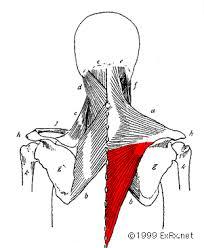
Lower Trapezius
- Concentrically accelerates scapular depression (traekker skulderblade nedaf)
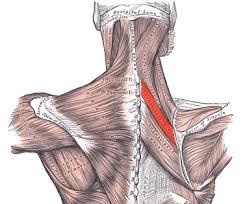
Rhomboid Minor
- Concentrically produces scapular retraction and downward rotation (smaller)
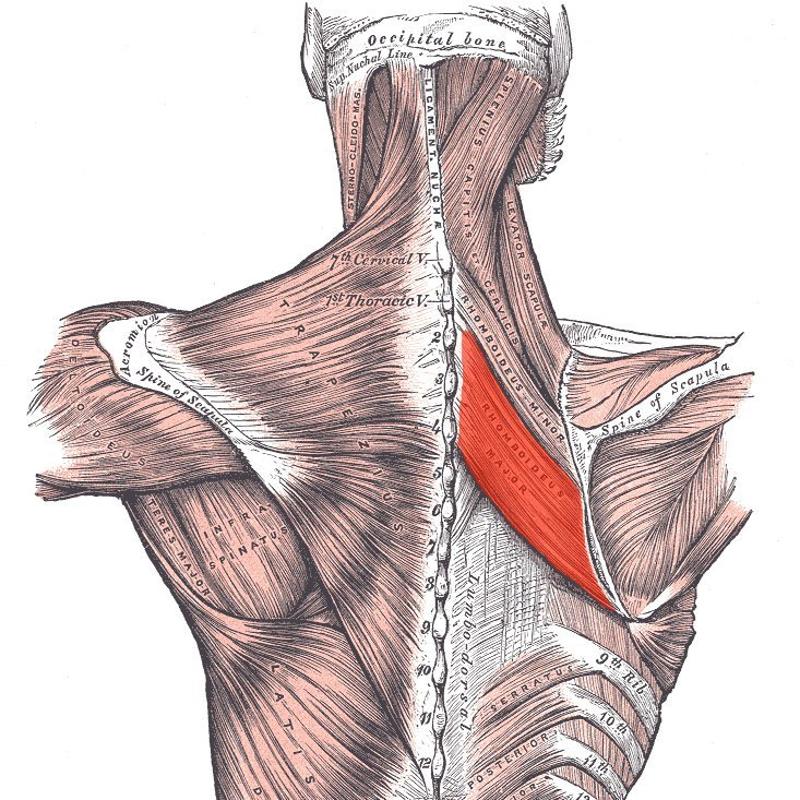
Rhomboid Major
- Concentrically produces scapular retraction and downward rotation (bigger) (traekker skulder blade sammen)
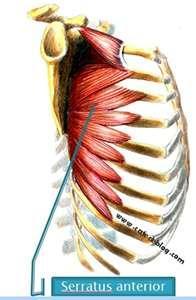
Serratus Anterior (wings)
- Concentrically accelerates scapular protraction (Abduction)
- abduct scapula and upwardly rotates it while abducting the arm
- Stabilize scapular by holding it to chest wall
Latissimus Dorsi
- Concentrically accelerates shoulder extension, adduction, and internal rotation
- Adducts the arm (at the shoulder)
- Medially rotates the arm (at the shoulder)
- Extends the arm (at the shoulder)
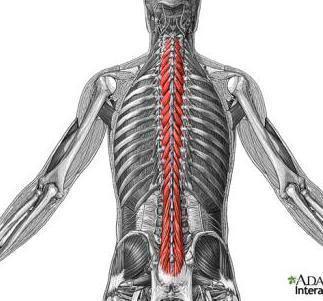
Multifidus
- Concentrically accelerates spinal extension and contralateral
rotation
- Extension of vertebral column (bukke fremover)
- Lateral flexion of vertebral colum (side boejning)
- Contralateral (opposite side) rotation
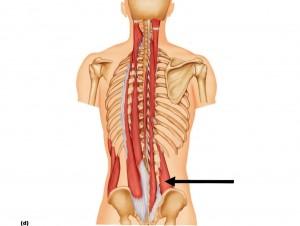
Quadratus Lumborum
- Extension of vertebral column
- Lateral flexion of vertebral column
"bukke fremover og boeje til siden"
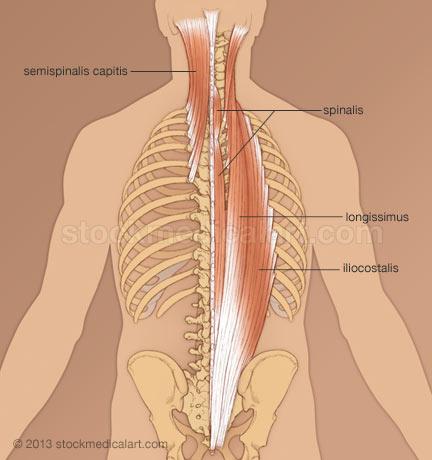
Superficial Erector Spinae:
- Iliocostalis
- Longissimus
- Spinalis
- Concentrically accelerates spinal extension, rotation adn lateral flexion
- 3 muscles, grouped in one...
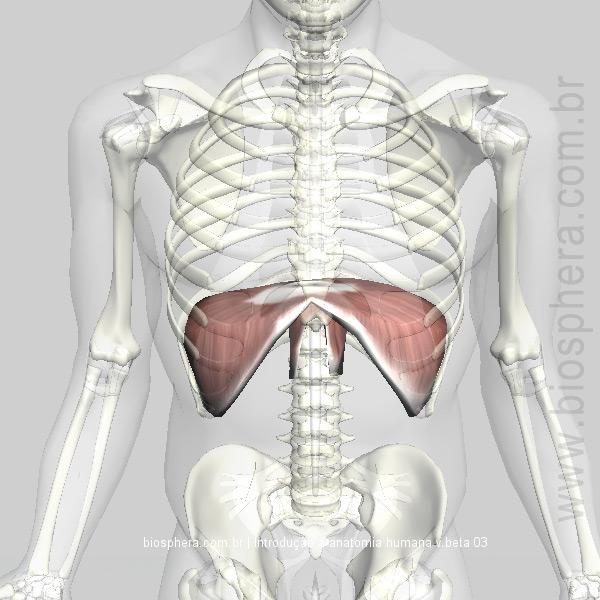
Diaphragm
- Concentrically pulls the central tendon inferiorly, increasing the volume in the thoracic cavity (Vejrtraekning)
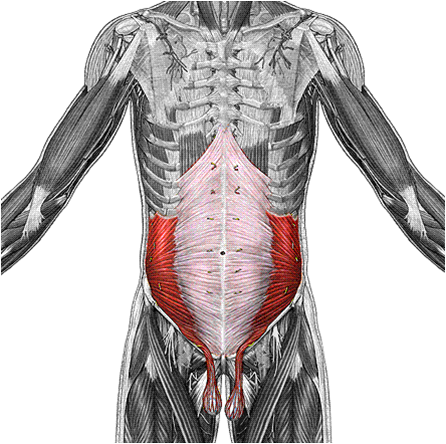
Transverse Abdominis
- Increases intra-abdominal pressure
- Supports the abdominal visecera
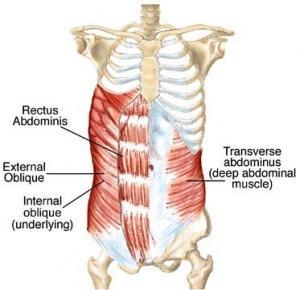
Internal Oblique
Concentrically accelerates spinal flexion, lateral flexion, and ipsilateral rotation
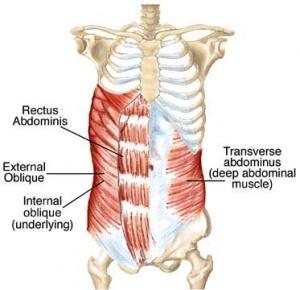
External Oblique
- Concentrically accelerates spinal flexion, laeral flexion, and contralateral rotation
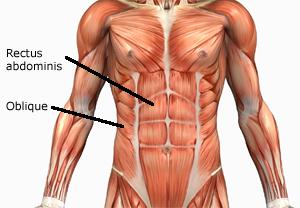
Rectus Abdominis
- Concentrically acceleartes spinal flezion, lateral flexion, and rotation
- Flexes vertebral column (torso)
- Compresses abdomen
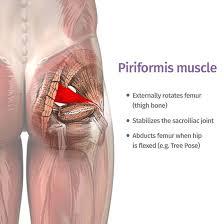
Piriformis
- Concentrically accelerates hip external rotation, abduction and extension
- muscle runs behind the hip joint and aids in external hip rotation, or turning your leg outward. The catch here is that the muscle crosses over the sciatic nerve.
- muscle can become tight from, for example, too much sitting.. and then compress and irritate the sciatic nerve.
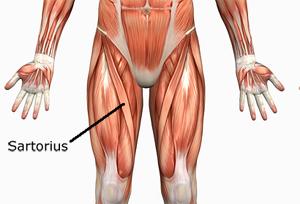
Sartorius
- Concentrically accelerates hip flexion, external rotation, and abduction
- Concentrically accelerates knee flextion and interal rotation
- muscle assists in flexing, weak abduction and lateral rotation of hip, and flexion of knee. Looking at the bottom of one's foot, as if checking to see if one had stepped in gum, demonstrates all four actions of this muscle.
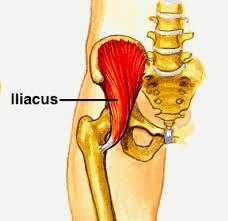
Illiacus
- Concentrically accelerates hip flexion and external rotation
- Flexes and laterally rotates thigh at hip
- Flexes trunk and hip on thigh
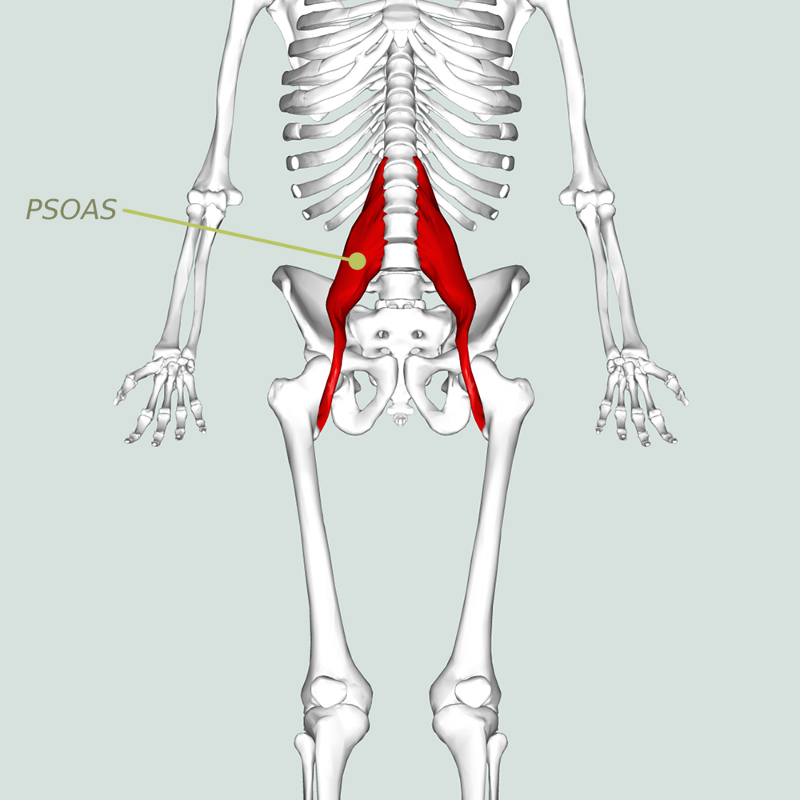
Psoas
- Concentrically accelerates hip flexion and esternal rotation
- Concentrically extends and rotates lumbar spine
- only major muscle that connects the lower body to the torso
- When it's tight, you can lose range of motion in the lower back, shoulders, and hips.
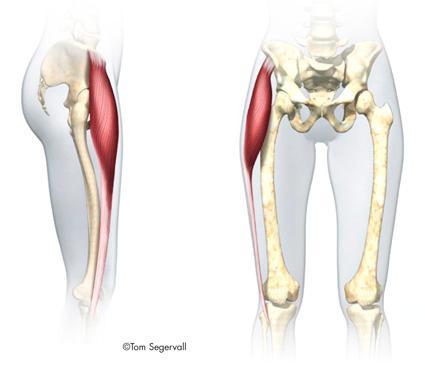
Tensor Fascia Latae
(Including the Iliotibial Band *IT-band*)
- Concentrically accelerates hip flexion, abduction, and internal rotation
- muscle, located on the side of your pelvis, helps to stabilize your hip through its connection into a strip of tough connective tissue on your outer thigh called the iliotibial band. Stretching a chronically contracted tensor fasciae latae can help improve the range of motion of your hips
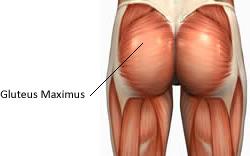
Gluteus Maximus
- Concentrically accelerates hip extension and external rotation
- Extends and laterally rotates thigh at hip
- Upper fibers help abduct the thigh (the inferior fibers also help stabilize the extended knee by tightening illiotibial tract)
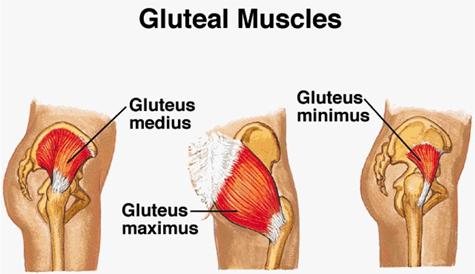
Gluteus Minimus
- Concentrically accelerates hip abduction and internal rotation
- Abducts thigh at hip
- Anterior fibers medially rotate thigh
- https://www.youtube.com/watch?v=fGK-bGR_7qw
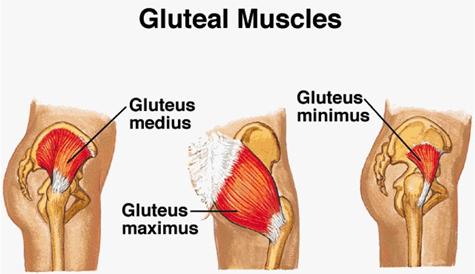
Gluteus Medius
- Concentrically accelerates hipabduction and internal rotation (anterior fibers) (Abducts thigh at hip and medially rotates thigh)
- Concentrically accelerates hip abduction and external rotation (Posterior fibers) (Abducts thigh at hip and laterally rotates thigh at hip)
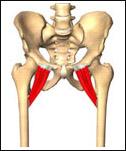
Pectineus
- Concentrically accelerates hip adduction, flexion, and internal rotation
- Adducts and flexes thigh
Gracilis
- a slender superficial muscle of the inner thigh
- Concentrically accelerates hip adduction, flexion, and internal rotation
- Assists in tibial internal rotation
- Adducts thigh at hip (also flexes the leg at the knee and medially rotates leg when knee is flexed)
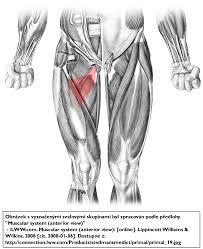
Adductor Brevis
- Concentrically accelerates hip adduction, flexion and internal rotation
- Adducts and flexes thigh at hip (may also laterally or medially rotate the thigh
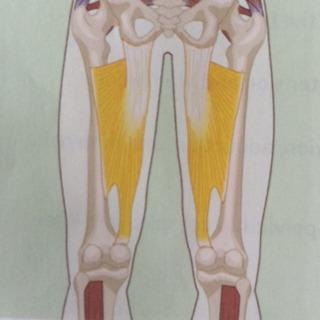
Adductor Magnus - Posterior Fibers
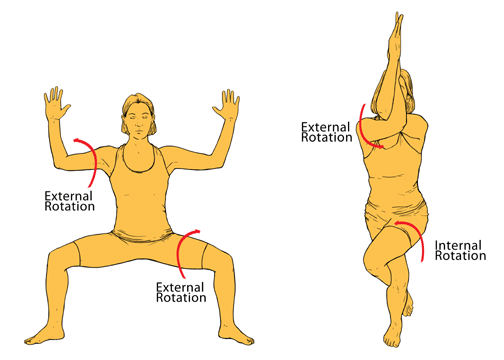
- Concentrically accelerates hip adduction, extension, and external rotation
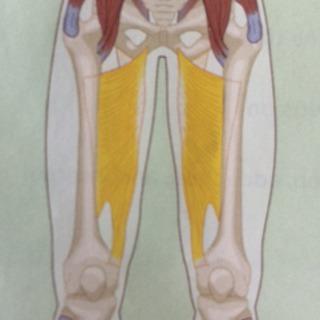
Adductor Magnus - Anterior Fibers
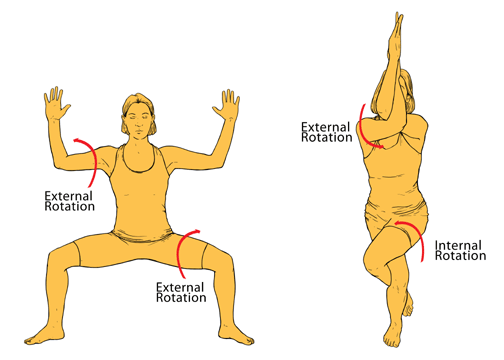
- Concentrically accelerates hip adduction, flexion and internal rotation
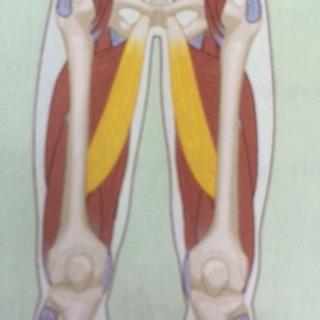
Adductor Longus
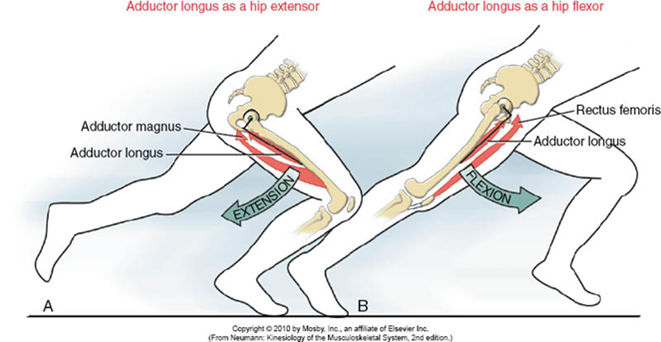
- Concentrically accelerates hip adduction, flexion, and internal rotation
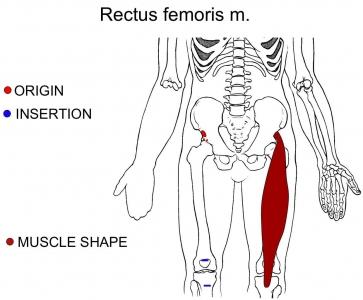
Rectus Femoris
- Quadriceps
- Concentrically accelerates knee extension and hip flexion
- Ecerxise:
- Longes, Squat, leg press, leg extension
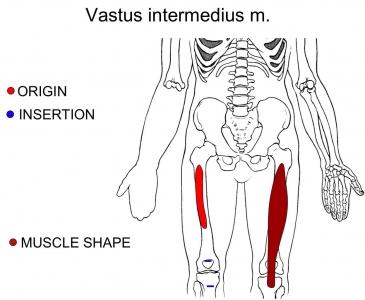
Vastus Intermedius
- Quadriceps
- Concentrically accelerates knee extension
- Exercise:
- Squat, knee extension w/band
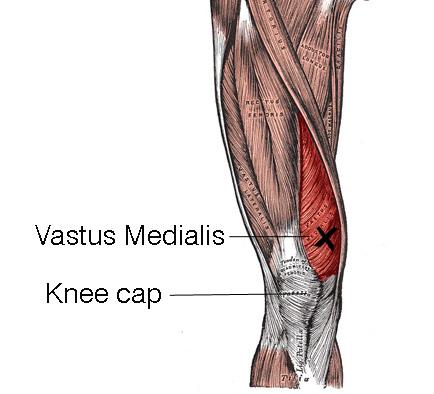
Vastus Medialis
- Quadriceps
- Concentrically accelerates knee extension
- Exercise:
- Squat, lunges, leg extension, leg press
- Exercise benefit
- knee stability, prevention of patellofemoral joint pain, develop the outer portion of your thighs and stop your knees from turning inward while squatting
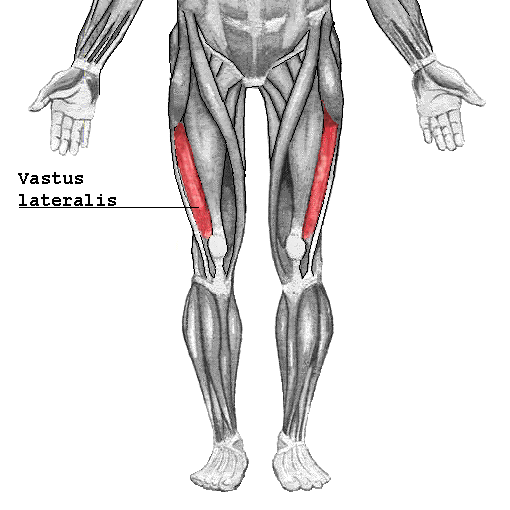
Vastus Lateralis
- Quadriceps
- Concentrically accelerates knee extension
- Exercise:
- Squat - Consciously keeping your knees apart requires the lateralis to activate and strengthen
- Exercise benefit:
- develop the outer portion of your thighs and stop your knees from turning inward while squatting
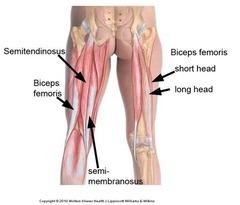
Semitendinousus
- Hamstring Complex
- Concentrically accelerates knee flexion, hip extension, and tibial internal rotation
- Exercise:
- leg curling variations, such as the standing and seated leg curl. The hamstrings can be effectively targeted via hip extension with stiff leg deadlifts, traditional deadlifts and good mornings.
- Exercise benefit:
- Strong hamstrings are important for a healthy and injury resistant knee joint.
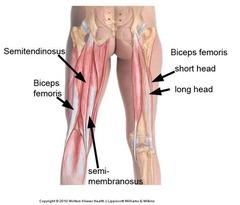
Biceps Femoris - Short Head
- Hamstring Complex
- Concentrically accelerates kneww flexion and tibial external rotation
- Exercise:
- Squat, hamstring curl,leg lift
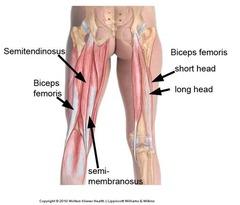
Semimembransosus
- Hamstring Complex
- Concentrically accelerates knee flexion, hip extension, and tibial internal rotation
- Execise:
- Stiff leg deadlift, clean deadlift, traditional deadlift, hamstring curls.
- Exercise Benefits
- The development of the hamstrings (coupled with strengthening of the knee extenders) is particularly important for a stable knee joint. Strong hamstrings can reduce the stress and injury risk to ligaments during dynamic sporting activities.
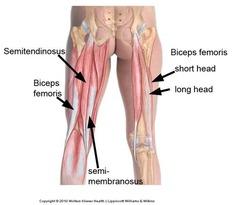
Biceps Femoris - Long Head
- Hamstring Complex
- Concentrically acelerates knee flexion and hip extension
- Tibial external rotation
- Exercise:
- Squat, hamstring curl,leg lift
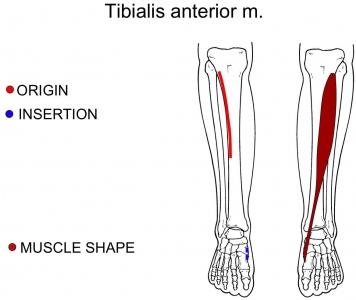
Anterior Tibialis
- Lower Leg Musculature
- Concentrically accelerates dorsiflexion and inversion
- Exercise
- Standing reverse calf raise and the seated reverse calf raise
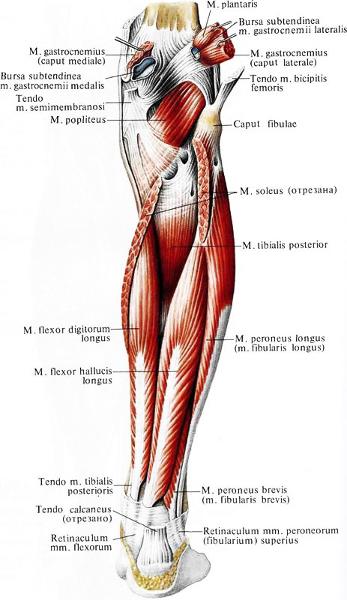
Posterior Tibialis
- Lower Leg Musculature
- Concentrically accelerats plantarflexion and inversion of the foot
- Exercise:
- Calf raise
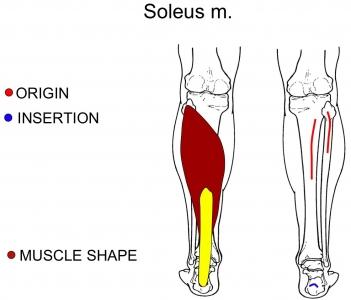
Soleus
- Lower Leg Musculature
- Concentrically accelerates plantarflexion
- Exercise:
- Seated calf raises
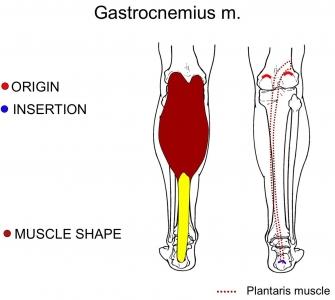
Gastrocnemius
- Lower Leg Musculature
- Concentrically accelerates plantarflexion
- Exercise:
- Calf raise
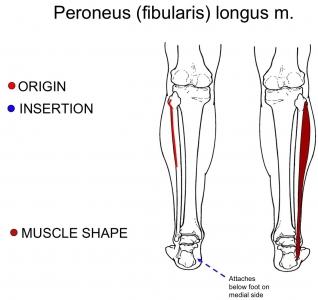
Peroneus Longus
- Lower Leg Musculature
- Concentrically plantarflexes and everts the foot
- Exercise:
- Calf raises, elevated calf raises